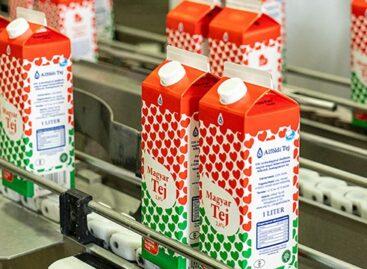The price of paprika is getting more and more expensive in Hungary
Over the past year, the price of ground paprika in Hungary has skyrocketed, reaching over 8,000 Hungarian forints per kilogram by the end of the summer of 2023. Specifically, premium-grade Hungarian paprika products are even more expensive, with an average price of 13,000 to 15,000 forints per kilogram. The situation in this industry is far from simple, as domestic production is considerably more expensive compared to competitors, and there is a growing influx of imported products.

It’s worth noting that some paprika products labeled as “Szegedi paprika” are, in fact, made from paprika powder imported from Peru, Spain, or Bulgaria, even though this is indicated on the packaging. This has raised questions about the challenges faced by Hungarian producers, especially considering that both Kalocsa and Szeged paprika are considered national treasures.
For those purchasing paprika in stores today, the price may come as a shock. The most recent data indicates that the average price per kilogram has exceeded 8,000 forints, meaning that an average 100-gram portion costs approximately 800 forints. This dramatic increase can be attributed to the inflation crisis that has affected Hungary between 2022 and 2023, with prices rising by a staggering 41.6%.
Historically, the price of paprika began to rise in Hungary as early as December 2021 and took a steep upward trajectory from May 2022. This has led to the most expensive paprika products on store shelves now costing over 13,000 forints per kilogram. Despite these astronomical prices, the paprika industry is facing numerous challenges.
Recently, Zsolt Feldman, the State Secretary for Agriculture and Rural Development at the Ministry of Agriculture, discussed the changing landscape of the Hungarian paprika industry. He emphasized that Hungarian producers should not long for the conditions of 20 years ago, as the market has evolved, mass production is no longer viable, and consumer habits have changed.
Feldman stressed the importance of updating and modifying product descriptions and production regulations to meet the changing quality standards. He suggested that protecting the origin of Szeged and Kalocsa paprika products could strengthen market positions. Furthermore, he highlighted the prevalence of cheap Chinese paprika on the European market and the need for Hungarian paprika to distinguish itself based on quality and protected designations of origin.
Official data reveals a continuous decrease in the size of Hungarian paprika cultivation over the past decade, along with declining production levels. Despite being a Hungarian specialty, the cost of paprika production in Hungary is generally 30-60% higher than the global average. One reason for this is the drying process in Hungary, which relies on gas, whereas sun drying is commonly used in southern regions.
Braunmüller Lajos, the editor-in-chief of Agrárszektor, also pointed out that the Hungarian paprika industry has lagged behind in implementing developments that could improve production efficiency, reduce costs, and mitigate weather-related risks. Investments are needed in post-harvest phases, such as processing and marketing campaigns, to communicate the quality advantages of Hungarian paprika and justify the higher price.
In conclusion, the rising price of paprika in Hungary is a consequence of several factors, including increased production costs, changing consumer habits, and stiff competition from imported products. To overcome these challenges and maintain a competitive edge, the Hungarian paprika industry must adapt to modern market conditions, enhance quality, and communicate its unique value to consumers.
Related news
The Hungarian Confederation of Economic Workers also spoke out regarding the inflation data
🎧 Hallgasd a cikket: Lejátszás Szünet Folytatás Leállítás Nyelv: Auto…
Read more >K&H: what does child inflation show?
🎧 Hallgasd a cikket: Lejátszás Szünet Folytatás Leállítás Nyelv: Auto…
Read more >The forint may remain relatively strong, even permanently
🎧 Hallgasd a cikket: Lejátszás Szünet Folytatás Leállítás Nyelv: Auto…
Read more >Related news
Crowds return to stores: margin cap and year-end preparations drive retail traffic
🎧 Hallgasd a cikket: Lejátszás Szünet Folytatás Leállítás Nyelv: Auto…
Read more >The kings of the New Year’s Eve list: hot dogs and champagne in abundance
🎧 Hallgasd a cikket: Lejátszás Szünet Folytatás Leállítás Nyelv: Auto…
Read more >The Alföldi Tej case is drifting towards an uncertain outcome
🎧 Hallgasd a cikket: Lejátszás Szünet Folytatás Leállítás Nyelv: Auto…
Read more >






